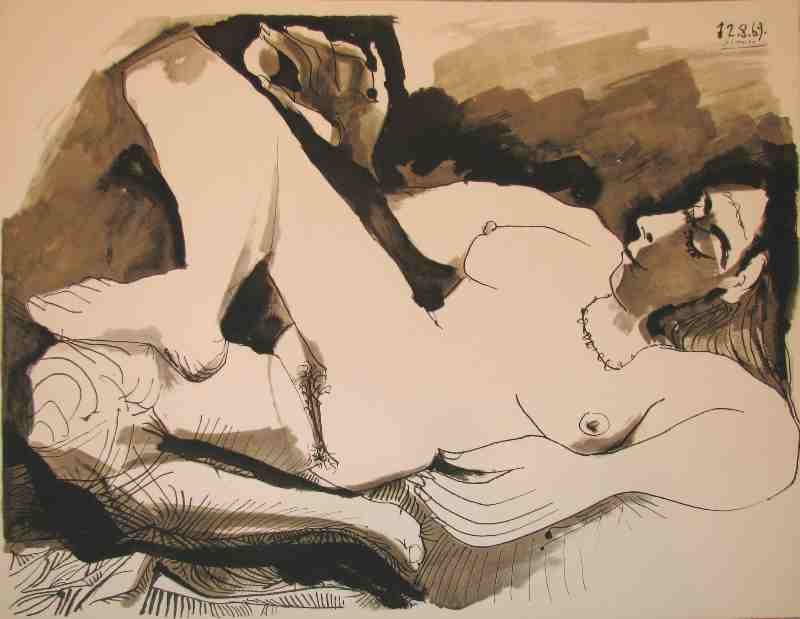PABLO PICASSO
Picasso was the first-born child to middle-class parents, María Picasso and Don José Ruiz. He grew up in Málaga in the Andalusian region of Spain and received formal artistic training from his father, an art professor and curator at the local School of Crafts. Following the traumatic death of his younger sister, Concepcion, in 1895, Picasso and his family moved to Barcelona, where the artist, despite his young age, was offered acceptance to the prestigious Academy of Fine Arts, known as La Lonja. Soon Picasso’s talent surpassed his fathers, who happily conceded his paintbrushes to his son, in a gesture of transference from one generation to the next.
ABOUT PABLO PICASSO
In 1900, at the age of nineteen Picasso moved to the infamous Montmartre district in Paris, where he embarked on his blue period, characterized by paintings with a monochromatically blue color palette. There he was influenced by artists such as Delacroix, Ingres, Van Gogh, Gauguin and Degas. Between the years of 1901 and 1904 Picasso moved back and forth between Barcelona and Paris, never sitting still. Finally in 1904, he decided to settle in Paris, where he began painting works from the rose period.
In 1907 Picasso painted arguably his most famous work, ‘Les Demoiselles d'Avignon.’ The painting led to his emergence at the forefront of the new Cubist style, and gave him a reputation as an internationally known painter of the most controversial subject in artistic discussions. Picasso’s many love affairs also motivated him to approach his paintings during this period with great enthusiasm and zest.
In his later years, Picasso was dedicated to continue working feverishly; it was clear that his “erotic drive transformed into artistic desire.” The artist’s meeting with lithographer Fernando Mourlot in 1945, confirmed his interest in the graphic arts, and propelled him to pursue mediums such as etchings, linocuts and lithographs with a sort of erotic and fast-paced frenzy. This new style was later defined as Neo-Expressionism, proving once again that Picasso was ahead of his time. His “347 series” of erotic prints, begun in 1968, represents one of the greatest achievements of modern printmaking. In defining the combination of sexuality and art Picasso simply stated, “They are the same thing, because art can only be erotic.”






